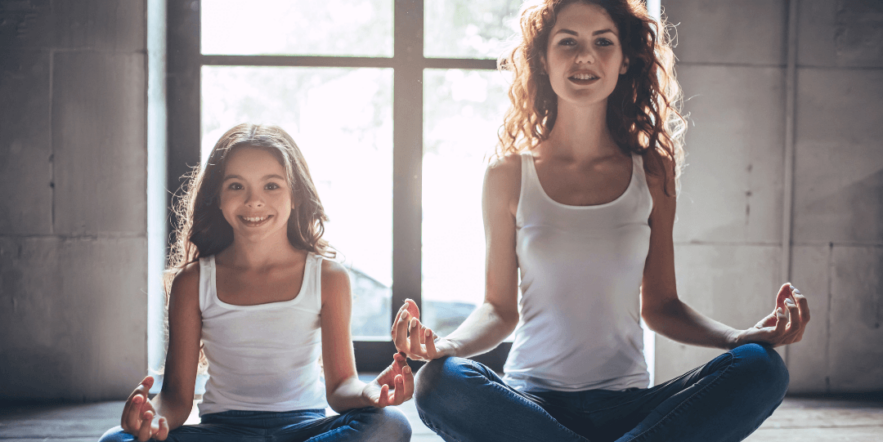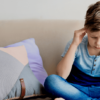Last updated:
Here are six suggestions to help minimize migraines episodes and their pain. You may also want to do them with your child, because, as you know, parenting is stressful, too.
- Meditation and guided imagery. Guided imagery is a technique that induces relaxation by leading thoughts to a peaceful, happy place, thereby reducing anxiety and pain. Children can have fun listening to different voices and styles, such as music, nature sounds and silences, and choose their favorites. Download apps (there are many free versions) and try them out. I show teens how to use the Insight Timer app, one of the best, on my smartphone and have them download it on theirs.
- Breath counting for migraines relief. Breath counting is the simplest, easiest technique to access and can be done at any time and nearly anywhere. One method involves breathing in for a count of four, holding it for seven, exhaling for eight, then repeating and, finally, being aware of the calmness as it descends. I encourage kids to use this method at school when feeling stressed. It’s likely that no one else will know what they are doing. In fact, they are simply breathing.
- Progressive body scan. Because some kids find it uncomfortable to focus on their breathing, a body scan is a better way to induce relaxation, get them out of their tense minds and into their bodies. During this exercise, which is especially helpful at bedtime, kids can systematically focus their attention on parts of the body, from the feet to the head. By practicing this technique, they develop a mindful awareness of bodily sensations and can relieve muscle tension. They can use an app for guidance at first, and then do it on their own.
- Cognitive behavioral therapy (CBT). If trying out an app isn’t helpful, then you and your kid may consider working with a trained therapist for six to eight sessions of CBT training. One way to overcome any resistance to seeing a therapist is to think about the sessions as ways to learn stress-management skills, not talking about feelings. Some schools offer stress management or mindfulness classes for both teens and parents.
- Yoga. Yoga is for everyone. It helps to develop flexibility and strength in our bodies and brings on calmness, happiness and peacefulness to our minds. Regular yoga practice can improve posture, reduce tension-type headaches and decrease stress and anxiety, which are common migraine triggers. Parents and kids can access yoga through a class or on YouTube. It’s best to stay until the end of class because time is always set aside for relaxation.
- Acupuncture and acupressure for migraines. Acupuncture is a traditional Chinese medicine (TCM) practice, based on the premise that accessing specific points in the body can restore the balance of the body’s energy (called “qi” and pronounced che), stimulate healing and promote relaxation. Acupuncture can be quite effective at reducing stress and headaches and migraines. Kids who may be wary of the many needles used in acupuncture may be better off trying acupressure, which is essentially acupuncture without needles.
The more we can get our young people in touch with how stress feels in their bodies and how to manage migraines, the less it may affect them. The best strategy is the one a child likes and will actually do. In the end, this helps kids to be more resilient and have fewer headaches and migraines.
Victoria Karian is a pediatric nurse practitioner and can be reached at HeadFirst PNP.







